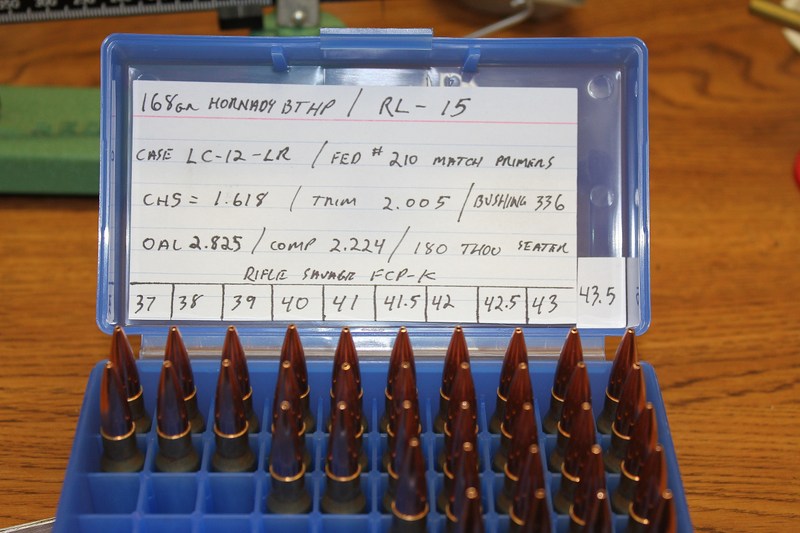If you look at any manual you will see the charge weights correlate to a specific numbered velocity in 100fps increments . It's why you see 21.2gr rather then 21.0 . Why bother with that when loading for rifle loads . If it says 21.2 , I'll start at 21.5 then 22 , 22.5 , 23 etc . If there is a huge amount of grains between min & max . I'll start at or very close to minimum and load two rounds working up in whole grain increments loading two of each for about 1/3 the load ladder then 3rds in 1gr or .5gr increments for the next 1/3 then 5rds in .5gr increments for the final 1/3 of the ladder .
The first third is only for checking pressure and is why I only load two rounds at each charge . The second third is with 3rds also really only keeping an eye on pressure but looking for a group just in case I shoot something real tight I can go back to it . The last third is where I'm expecting the loads to shine and is why I start loading 5rds per charge .
I generally load in .5gr increments from around minimum . That usually is 5 to 8 different charges . I don't have my notes in front of me be I think RL-15 and Hornady 168gr BTHP had quite a large gap between min and max loads . If I recall , if I would have done the .5gr increments I would have had to load 13 or 14 different loads to hit all charges from min to max . That to me just seems to be a waist of components . I did those test with ten different loads saving 14 bullets , primers and powder .
Hey found a pic of that very load development .

The first third is only for checking pressure and is why I only load two rounds at each charge . The second third is with 3rds also really only keeping an eye on pressure but looking for a group just in case I shoot something real tight I can go back to it . The last third is where I'm expecting the loads to shine and is why I start loading 5rds per charge .
I generally load in .5gr increments from around minimum . That usually is 5 to 8 different charges . I don't have my notes in front of me be I think RL-15 and Hornady 168gr BTHP had quite a large gap between min and max loads . If I recall , if I would have done the .5gr increments I would have had to load 13 or 14 different loads to hit all charges from min to max . That to me just seems to be a waist of components . I did those test with ten different loads saving 14 bullets , primers and powder .
Hey found a pic of that very load development .

Last edited:
